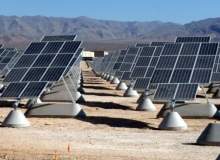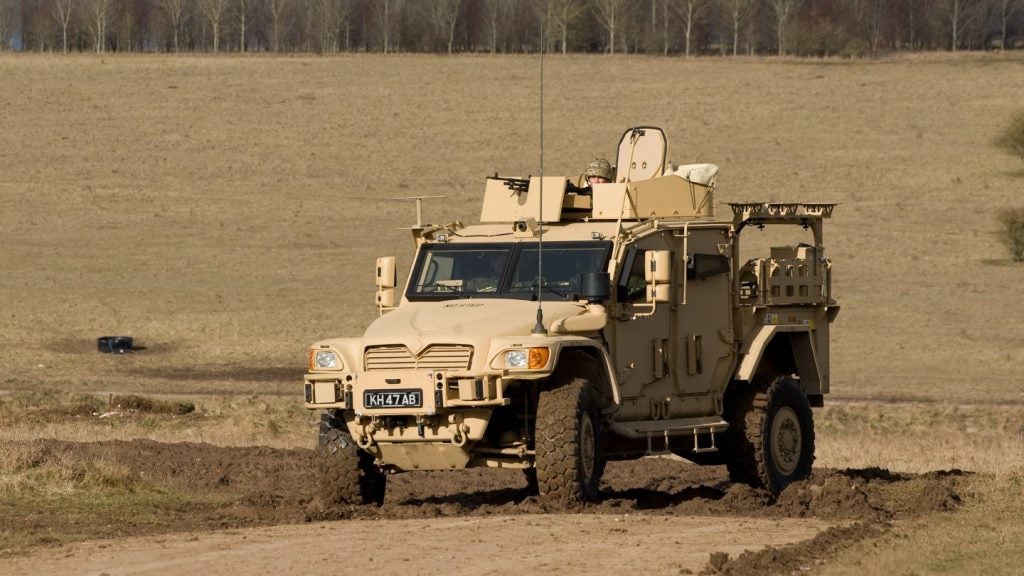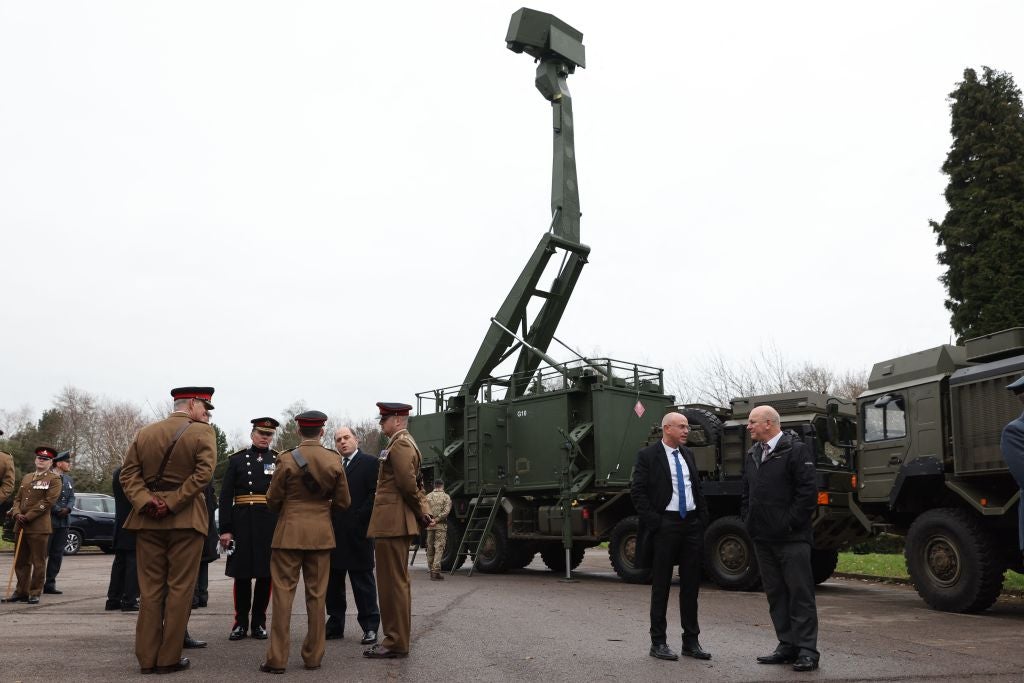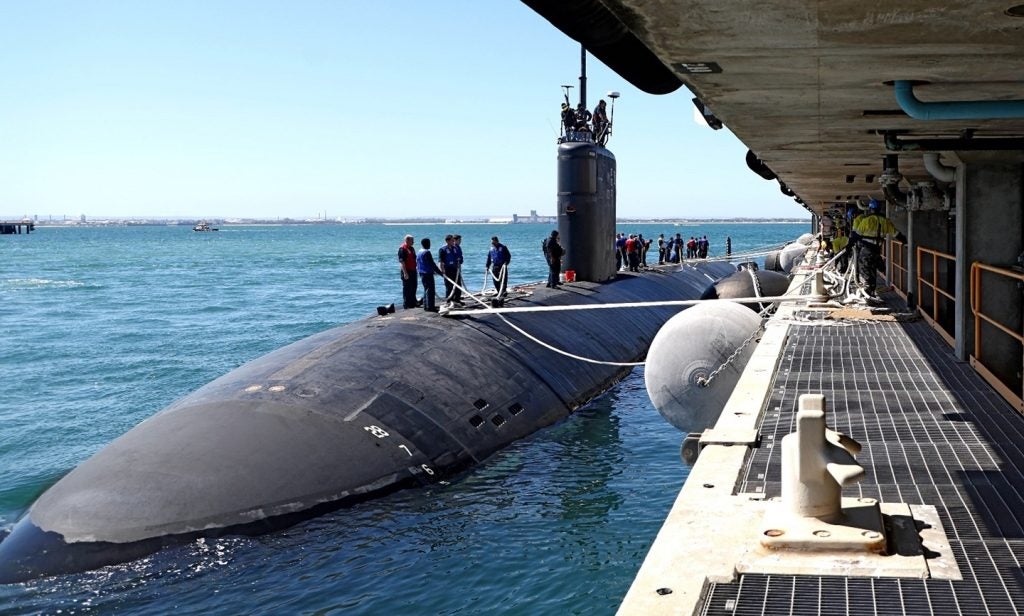

It may come as a surprise that the biggest war machine on the planet – the US military – is also one of the world’s leading proponents of renewable energy. But this green advocacy is less to do with saving the planet and more with the financial, operational and strategic risks associated with oil dependency. The bloody conflicts in Iraq and Afghanistan over the last decade have emphasised these risks, which have not only cost money but also lives.
In 2009, the Army Environmental Policy Institute found that, between 2003 and 2007, more than 3,000 US troops and contractors were killed or injured in Iraq and Afghanistan on a fuel supply convoy. And it’s not just supplying fuel in the area of operations that presents challenges. Delivering fuel across borders to support overseas missions, often across the territory and airspace of neighbouring countries, is also fraught with difficulty.
At the heart of the matter is the Pentagon’s insatiable appetite for petroleum.
The Pentagon consumes hundreds of millions of barrels of oil per year. In 2011, Defence Logistics Agency figures showed fuel for the military was costing the taxpayer $17.3bn every year. It’s a staggering amount and comparable to the defence budget of a medium-sized European country. Increasing fuel costs means this figure is unlikely to significantly reduce over the next few years, which could compromise other aspects of defence spending like pay, benefits and equipment procurement.
See Also:
The Department of Defense (DoD) is particularly susceptible to the short-term volatility of fuel costs, which can result in funding shortfalls if oil prices begin to rise. This vulnerability can be seen in the US Navy’s fuel budget, which is said to increase by $30 million for every $1 increase in the price of oil. As budgets have shrunk the services have struggled to pay for fuel as prices increase, leading to billions of dollars worth of unfunded fuel costs.
How well do you really know your competitors?
Access the most comprehensive Company Profiles on the market, powered by GlobalData. Save hours of research. Gain competitive edge.

Thank you!
Your download email will arrive shortly
Not ready to buy yet? Download a free sample
We are confident about the unique quality of our Company Profiles. However, we want you to make the most beneficial decision for your business, so we offer a free sample that you can download by submitting the below form
By GlobalDataThe US Navy: at the forefront of energy innovation
The US Navy in particular wants to "unleash its tether" from foreign oil by investing in advanced technology such as biofuels and hybrid propulsion systems, like those in the automobile industry. The Navy has traditionally been at the forefront of energy innovation among the services, something which dates back to its early applications of nuclear energy for submarines and aircraft carriers.
New technology has multiplied the number of batteries used and the weight a soldier has to carry.
The Navy has set ambitious targets to cut its use of fossil fuels by the end of the decade and announced initiatives such as the ‘Great Green Fleet’, a fleet of ships and aircraft which will deploy throughout 2016 to demonstrate the viability of alternate energy. In 2012, during the Rim of the Pacific (RIMPAC) exercise, biofuels powered an entire carrier strike group – minus the nuclear-powered elements – which cost the Navy a reported $12m for a day’s sailing.
In July, the US Navy included biofuels as part of its annual procurement of bulk fuels for the first time. The algae-based biofuels are known as ‘drop-in biofuels’ which can be blended with ordinary petroleum and used in existing equipment without any modifications. Through joint investment with the Departments of Energy and Agriculture, it is hoped the Navy’s purchases of biofuels will create production economies of scale in the domestic biofuels industry which will eventually bring down existing costs.
If biofuel prices eventually drop to the same level as petroleum-based fuels thanks to government funding, it could also be utilised by other industries like commercial shipping and aviation, industries which can also suffer from energy market instability.
"DOD’s investments are important not only because they accelerate innovation, but also because these investments offer a path to rapid cost declines that preclude commercial market entrance," said a 2012 report by The Information Technology and Innovation Foundation (ITIF).
That has been exemplified by the rapid cost declines occurring in next-generation biofuels as a result of the Navy’s investments since 2009, said the ITIF. Sceptics, however, argue that the focus on a domestic biofuels industry is misguided, especially as many US Navy ships refuel in foreign ports with no biofuel infrastructure.
A similar initiative from the US Air Force drew consternation from Republican lawmakers after it was revealed the service spent $59 a gallon for 11,000 gallons of biofuel in 2012. A gallon of ordinary petroleum costs around $3.50. As the biggest user of fuel in the entire US military – it accounts for 53% of the Pentagon’s total fuel use – it is of particular importance for the Air Force to reduce reliance on fossil fuels and drive efficiency.
Increasing fuel efficiency by land and air
The US Air Force wants to reduce its consumption of aviation fuel by 10% by 2015 and procure 50% of its domestic aviation fuel requirement "via an alternative fuel blend" by 2016. It is also leading several initiatives and technologies which it hopes will make its aircraft much more fuel-efficient in the future, including its biggest fuel users like the KC-135 and KC-10 refuelling tankers.
The service is also investing in next-generation turbine engine technology through its Adaptive Engine Technology Development (AETD) programme, which aims for 25% greater efficiency over current engines and will reduce the need for fuel-guzzling tankers. The Pentagon’s 2015 budget request earmarked $1bn for the programme, which is a significant investment when budgets are being squeezed.
Engine maker Pratt & Whitney (P&W) is just one company involved in the AETD programme and will benefit from the investment. With P&W’s commercial division supplying the likes of Airbus and Boeing, it’s likely the technology developed for the US military’s AETD programme will eventually transfer across into the company’s commercial products.
Despite being the bigger service in terms of manpower, the US Army consumes the least amount of fuel out of the three main services owing to the fact it does not operate a large number of fuel-intensive platforms like aircraft or ships. Still, it is usually soldiers who are at the sharp end of fuel supply issues on operations and suffer the casualties as a result.
Many of the Army’s energy initiatives are aimed at reducing the fuel needs of deployed troops located in remote areas like forward operating bases. The service has spent millions developing next-generation battlefield generators, which consume up to 21% less fuel and require less maintenance than previous models. Through organisations like the US Army Research, Development and Engineering Command, the military is pioneering tactical smart grids which integrate multiple technologies, such as renewables and energy storage systems, to lower energy use.
Soldiers in Afghanistan have begun to embrace solar technology as a means of charging batteries while bases use photovoltaic panels to power lights and other equipment, all of which takes the load off generators. New technology like ruggedized ‘solar blankets’ are being developed by the US military which have 30% efficiency and can be used on long missions in hostile climates like Afghanistan.
But like biofuel, these technologies are at an early stage and greater adoption is not expected for a number of years. One setback for the US Army is that many of their clean energy initiatives, specifically tailored for the warzone, do not have widespread applications for commercial users. This means a transition from limited field experiments with prototypes to scaled-up commercial production is much more difficult for projects like wearable solar.
"Directly transformative breakthroughs in wind, solar and fuel cells should not be expected from current DOD investments in energy innovation," said the 2012 ITIF report.
Net Zero Energy – driving energy efficiency on US bases
There’s also a huge effort by the US military to increase its energy efficiency at home, as well as abroad. While three quarters of the US military’s energy consumption is ‘operational energy’ – fuelling vehicles, ships, aircraft and other equipment on operations like generators – the other quarter is ‘installation energy’ which is used to power bases at home and other non-operational equipment.
Body-worn health monitoring systems measure physiological signals in real time to track individuals’ physical condition and performance.
One of the biggest projects for the US Army is the ‘Net Zero Energy’ initiative. The aim is for several army bases to be self-sufficient in energy creation by 2020, effectively generating as much energy from renewable sources as the base uses. Fort Bliss in Texas, home of the 1st Armored Division, is installing the Army’s largest solar farm to power a sizeable chunk of the base. In a first for the Army, it partnered with a local utility firm to complete the 20-megawatt solar farm.
The US Air Force has similar initiatives, including the installation of a 16.4-megawatt solar farm at Davis-Monthan Air Force Base in Arizona.
Much of the US military’s non-tactical vehicle fleet is also switching to electric vehicles; the US military has one of the largest electric-hybrid fleets in Federal Government. All this means increased investment in the commercial renewables industry – primarily through public-private partnerships which leverage commercial skills and technology – which is creating greater opportunities for growth in the sector.
Some have questioned this focus on expensive petroleum alternatives like biofuels, especially when some predictions show the US could become the world’s top oil producer in 2016, surpassing Saudi Arabia, and achieve energy self-sufficiency by 2020. Nothing is certain, however, and efforts to reduce the US military’s thirst for oil will likely influence projects and benefit commercial industry for years to come.
Follow Grant Turnbull on Google+


.gif)





